You probably haven’t heard of Lucca. That’s because it has no major tourist sites, little historical significance, and the only internationally renowned Lucchesi was an opera composer, Puccini. In spite of this – or because of it – it was my favorite city in Italy.
That’s because of the people, the sense of community, the streets, and the cookies.
When we stepped on the train in Florence, we’d already spent about a week in Italy, seeing dozens of churches, museums and other culturally enriching sights. How exhausting. We were ready for a break – to sit back, relax, and people-watch for a few days. Before arriving in Italy, we hadn’t made any reservations, and variously considered Siena, Pistoia or another night in Florence before settling on Lucca. We spent two days there, on the way from Florence to Rome.
Lucca is a city of 100,000, just north of Pisa, on the western coast of Italy about an hour from Florence. It’s not a seaside town – it lies nestled between mountains that shield it from the coast – but it’s close enough to attract seagulls.
We stayed in an AirBnB in a quiet pocket near the center of town, and this was a real BnB experience. The apartment was not in somebody’s home – an employee rode a bicycle to the door and let us in. And there was a woman each morning who prepared food for us (fruit salad, cappuccino, coffee, toast, yogurt), as part of the deal staying there. We even got seconds on the cappuccinos.
The sole distinguishing tourist feature of the city are the walls which surround it – it’s the only city with intact Renaissance walls in Italy. These separate the main city from the adjacent suburban areas; they’re roughly 30 feet tall, about 40 feet wide, formed mostly of earth embankments with all the features prescribed by state-of-the-art 16th century military science – enfilades, glacis, batteries. They’re remarkably intact, and nowadays function as a gigantic park around the city.
The area enclosed by the walls, which we never left except to get to the train station, is about 1.5 miles long and 1 mile wide. We explored this entire area during our stay: it’s really not that big and highly walkable. Cars are few and far between.
We stayed Friday and Saturday night, and both nights the town grew crowded as people from the surrounding area drove to the walls, parked, and walked in for a stroll (the ‘passegiatta’). The northwestern quarter of the city is a shopping district, crammed with clothing stores, restaurants and bars, and the crowds were shoulder-to-shoulder. It might have been annoying, but was instead charming. There were lots of kids playing, most of the people were Italian, and it felt like the whole city was out and about, spending the night together. These streets were mostly clear of cars, and we walked on the streets, though occasionally everyone had to move aside so an errant driver could get past.
Eventually this network of streets opened up to a large courtyard, the Piazza Napoleone (Napoleon conquered the city, and liked it so much he installed his sister as the leader – the “Queen of Etruria”). The Piazza was filled with teenagers and children running around, having a good time. It was charming.
In the center of the Piazza was a merry-go-round – these were quite popular across Italy. There were also some huge street vendor stands selling cookies and candies, including popular chickpea cookies – we grabbed a huge bag of these and ate them all in one sitting (having some fun in the process).
While in Lucca, we visited two minor tourist attractions: the anfiteatro and the Guinigi Tower.
The anfiteatro dates back from Roman days, though the original structure is long gone. Instead, it stands as a reminder of the city’s history. Anfiteatro is Italian for amphitheater, but the area is now an open square, surrounded by small shops and restaurants, with no amphietheatre left behind. It has a unique oval shape: this is all that remains of the original Roman structure. When the building was eventually torn down, this square was left behind. Even the buildings are curved – unusual now that we’re used to seeing rectangular structures. This was right around the corner from our AirBnB, and practically deserted.
Meanwhile, the Guinigi tower is different from other Italian towers, such as those in San Gimignano. Although many of those towers are still standing, they look different than they used to: they originally had trees or gardens on top. The Guinigi tower still does, and is as close a thing as the city has to an iconic landmark. It also offers great views and solitude – not that the city proper was noisy or crowded. We spent a while on top, met a friendly Italian family who wanted to practice their English, and watched the seagulls and cats below.
We also toured the walls. We rented bikes (pretty cheap – the guy who rented them out was easy-going). We did a bit of riding, but the top of the walls were so crowded in the weekend afternoon that it was nerve-wracking to ride anywhere. We mostly ended up walking, and should have gone for a ride earlier in the day. Next time!
Overall, Lucca was charming, super-quiet (except for shopping), and a great intermission between two overwhelming cities. Thus, for our vacation it was my favorite city in Italy, and the one where I’d most like to live.
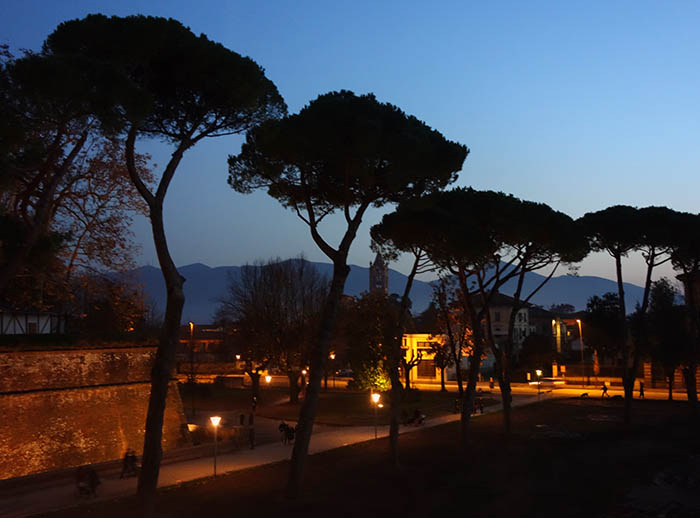
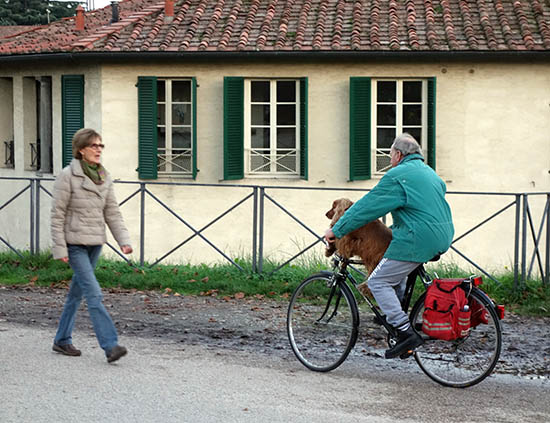
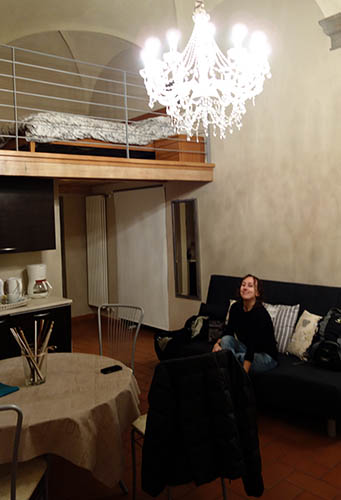
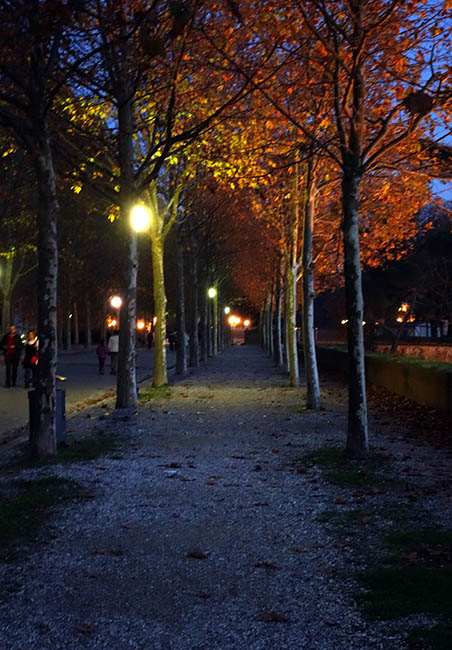
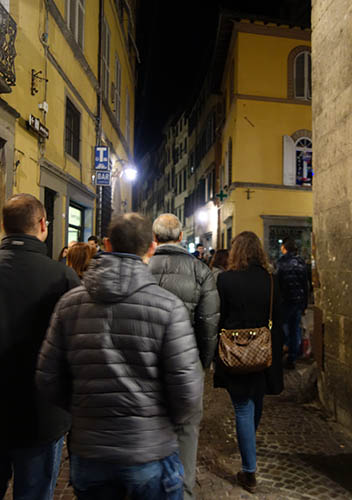
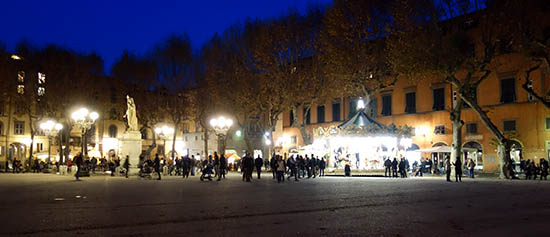
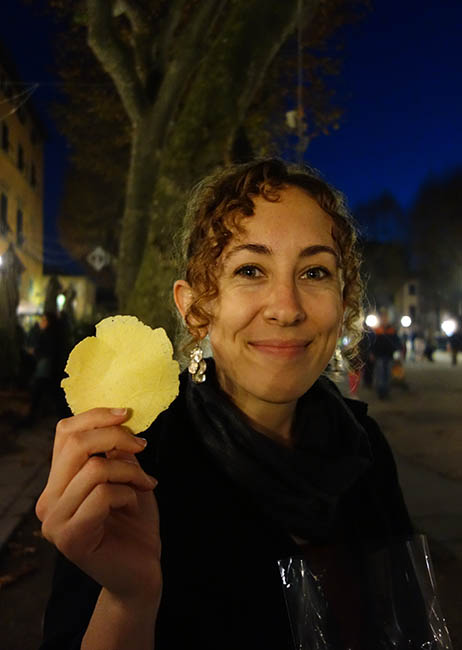
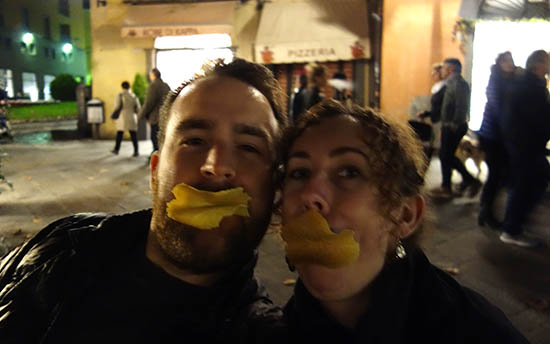
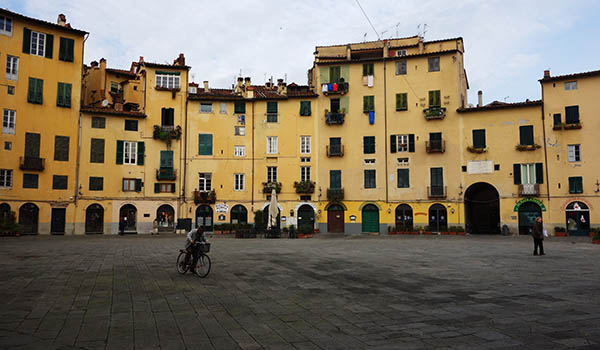
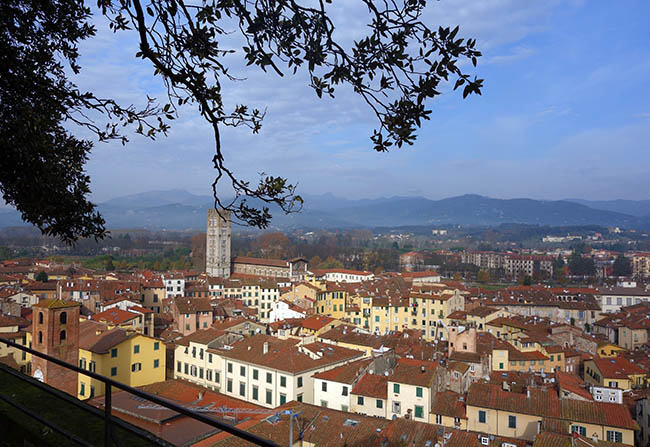
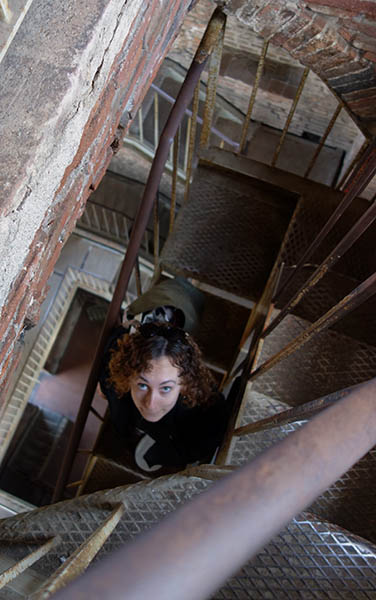
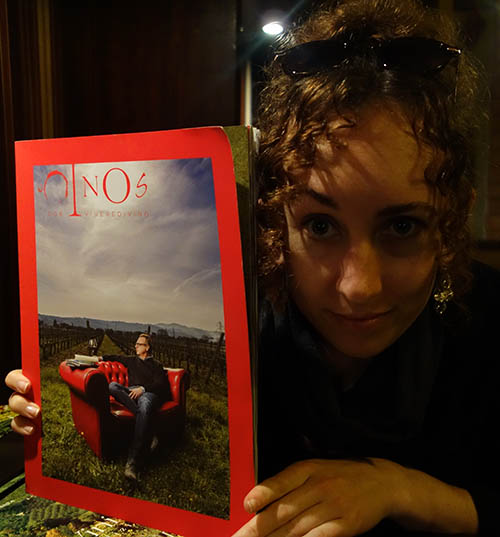
Pingback: Leaving Italy | Rob Travels